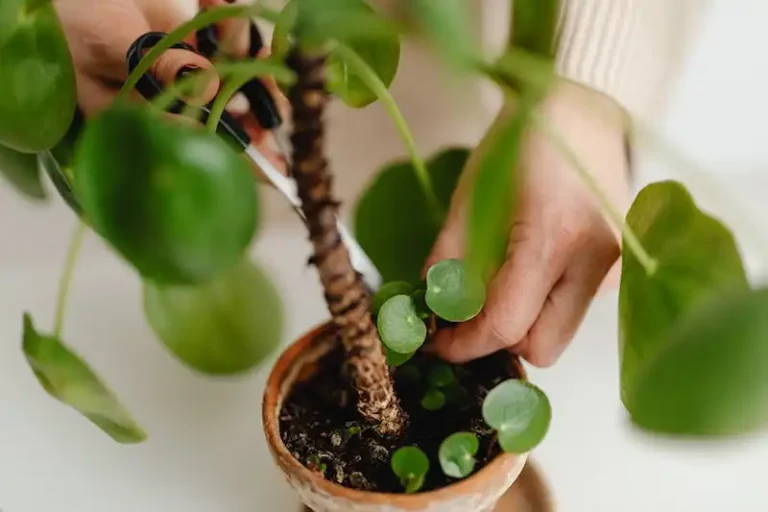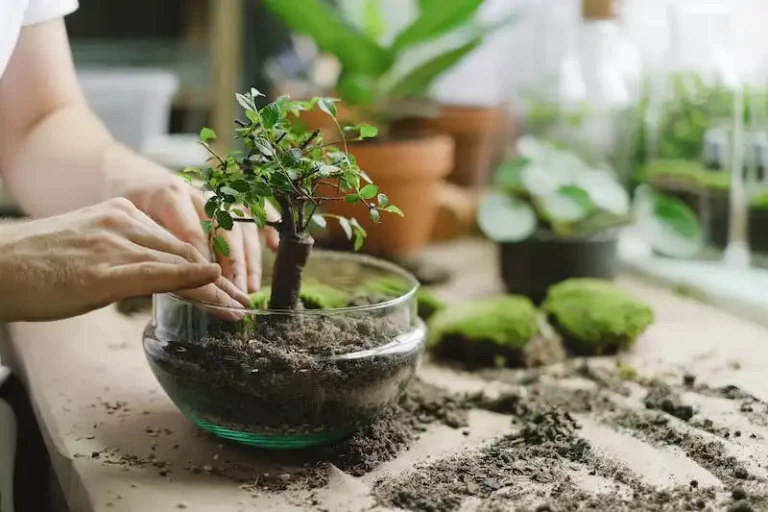Bee Balm Monarda, also known as Beebalm, is a perennial flowering plant that belongs to the mint family. With its showy flowers and attractive foliage, it is a popular choice among gardeners. Bee Balm Monarda is native to woodland areas in the eastern part of the United States, where it can often be found spreading throughout the square and ovate leaves.
When planted in the right conditions, Bee Balm Monarda can tolerate a variety of soil types, from acidic to quick-draining. It prefers moist, well-drained soil, and will grow best in full sun or partial shade. In terms of light requirements, this plant needs at least 6 hours of direct sunlight per day.
The blooms of Bee Balm Monarda are its most attractive feature. They come in a variety of colors, including red, pink, purple, and white, and are arranged in whorls along the stems. The flowers attract bees, butterflies, and even hummingbirds, making it a great addition to any garden. To encourage more blooms, deadhead the flowers after they fade.
Bee Balm Monarda has a few basic care requirements. It should be watered regularly, especially during dry periods. Fertilizer can be applied once a month during the growing season to promote healthy growth. To prevent the spread of diseases, it is important to keep the foliage dry by watering at the base of the plant. It is also recommended to prune the plant in early spring to promote new growth and maintain a compact form.
Bee Balm Monarda has many uses in the garden. It can be planted as a specimen plant in the front of a border or used as a taller plant in the middle or back of a garden bed. It also works well in cottage gardens, herb gardens, and naturalized areas. The flowers are often used in cut flower arrangements and can be dried for later use.
In conclusion, Bee Balm Monarda is a versatile and attractive plant that adds color and interest to any garden. With its showy blooms, tolerance of different soil types, and ability to attract pollinators, it is a favorite among gardeners. Whether used as a border plant or a focal point, Bee Balm Monarda is sure to be a standout in any garden.
How to Grow and Care for Bee Balm
Bee balm, also known as Monarda, is a popular flowering plant that attracts bees, butterflies, and hummingbirds to the garden. If you’re a gardener looking to grow and care for bee balm, here are some basic facts and tips:
1. Growing Bee Balm
Bee balm is relatively easy to grow and can thrive in various conditions. It prefers full sun to light shade and well-drained soil. It can tolerate a range of soil types but prefers moist soil. Make sure to water the plants regularly, especially during dry periods. When planting bee balm, space the plants about 18-24 inches apart to allow for air circulation.
2. Care Requirements
To keep your bee balm healthy and vibrant, there are a few care requirements you should follow:
– Deadheading: Remove the spent flowers to encourage the plant to produce more blooms.
– Pruning: Trim back the stems in late fall or early spring to maintain the plant’s shape and encourage new growth.
– Fertilizer: Apply a balanced fertilizer in early spring to help promote healthy growth.
3. Common Problems and Pests
Bee balm can sometimes suffer from certain problems and pests. Here are a few instances to look out for:
– Powdery mildew: This fungal disease can affect the leaves, causing a white powdery coating. Make sure to provide good air circulation and avoid overhead watering.
– Aphids: These tiny insects can gather on the stems and leaves, sucking out the plant’s juices. Simply hose them off with water or use insecticidal soap.
– Leaf spot: This fungal disease causes dark spots on the leaves. Remove infected leaves and apply a fungicide if necessary.
4. Bee Balm Varieties
There are many varieties of bee balm available, offering a range of colors and heights. Some popular varieties include:
– Monarda didyma: This is the most commonly grown species, featuring red, pink, or purple whorls of flowers.
– Monarda fistulosa: Also known as wild bergamot, it has lavender or pink flowers and blooms throughout the summer.
– Monarda hybrids: These are cultivars that have been bred for specific traits, such as disease resistance or compact growth habits.
With proper care and attention, bee balm can provide years of beauty in your garden. The vibrant flowers and their ability to attract pollinators make it a valuable addition to any landscape.
Bee Balm Care
Bee balm, also known as Monarda, is a type of flowering plant that is native to eastern North America. It is a member of the mint family and is highly attractive to bees, birds, and butterflies. Bee balm plants have showy blossoms in various colors, such as red, pink, purple, and white. If you are looking to add some extra color and beauty to your garden, bee balm is a great choice!
When it comes to bee balm care, there are a few key things to keep in mind. First, bee balm plants thrive in full sun to part shade. They can tolerate a wide range of soils, but prefer moist, well-drained soil. When planting bee balm, be sure to space the plants about two feet apart to allow for proper air circulation.
In terms of watering, bee balm plants prefer to be kept consistently moist. Water them regularly, especially during dry periods in the summer. However, be careful not to overwater, as excessive moisture can lead to root rot. It’s also a good idea to mulch around the base of the plants to help retain moisture and suppress weeds.
When it comes to fertilizing bee balm, a basic, all-purpose fertilizer can be applied in late winter or early spring. Be sure to follow the instructions on the fertilizer package for proper application rates. In addition to fertilizer, bee balm plants can also benefit from regular deadheading. Deadhead the faded blooms to encourage a longer flowering season.
Bee balm plants can grow quite tall, reaching heights of three to four feet. To keep them from becoming too leggy and floppy, you can cut them back by about one-third in early spring or after the first bloom period. This will help promote a more compact and bushier growth habit.
In terms of pest and disease resistance, bee balm plants are generally resistant to common garden pests and diseases. However, they can sometimes be susceptible to powdery mildew, especially during periods of high humidity. To prevent powdery mildew, make sure to provide adequate air circulation around the plants and avoid overhead watering.
Bee balm plants are also known to attract a variety of pollinators, including bees, butterflies, and hummingbirds. So, if you want to create a garden that is alive with buzzing and fluttering creatures, bee balm is a must-have!
In summary, bee balm care involves planting them in a sunny to partially shaded spot, providing them with regular watering and well-drained soil, fertilizing them in late winter or early spring, deadheading the faded blooms, and pruning them to maintain their shape. With a little effort and care, bee balm plants can be a lovely and vibrant addition to any garden.
Bee Balm Monarda
Bee Balm Monarda, sometimes referred to as “Bee-Balm” or “Balm,” is a beautiful flowering plant that is native to North America. It is a favorite among gardeners due to its variety of colors and how it attracts bees, butterflies, and birds to the garden.
The leafy plant can grow up to three feet tall and has lush, green foliage. The flowers of the Bee Balm Monarda come in a variety of colors, including shades of red, pink, purple, and white. The blooms appear in late spring or early summer and can last throughout the summer months.
Bee Balm Monarda is a quick and easy plant to grow, making it a favorite among both beginner and experienced gardeners. It is tolerant of different soil types and can thrive in both full sun and partial shade. It is recommended to plant Bee Balm Monarda in well-draining soil that has been amended with organic matter.
One of the unique characteristics of Bee Balm Monarda is its ability to spread through underground stolons, forming a dense clump over the years. While this spreading nature can sometimes be problematic for gardeners, it can be controlled by regularly dividing and thinning the plant.
One of the benefits of planting Bee Balm Monarda in the garden is its resistance to disease and pests. It is relatively less prone to problems, such as powdery mildew, which is a common issue for other plants in the garden.
Bee Balm Monarda has been used by Native Indians for many years due to its various medicinal and culinary uses. The plant has a minty aroma and can be used to make teas, ointments, and salves. It is also known for its soothing properties and has been used to treat skin irritations and digestive problems.
In addition to its medicinal and culinary uses, Bee Balm Monarda has also been used for its ornamental value. It adds a pop of color to flower beds and attracts a variety of pollinators, such as bees and butterflies. The plant can also be a great addition to woodland gardens or planted along borders and pathways.
- The Bee Balm Monarda plant is relatively low maintenance, requiring minimal fertilizer and occasional deadheading to encourage continuous blooming.
- It is important to note that while Bee Balm Monarda is generally resistant to pests and diseases, it can still be susceptible to certain issues.
- For more information on how to care for Bee Balm Monarda and troubleshoot any problems, gardeners can consult local gardening resources or reach out to experts in the field.
In conclusion, Bee Balm Monarda is a beautiful and versatile plant that can be a valuable addition to any garden. Its vibrant flowers, tolerance to different soil types, and ability to attract bees and butterflies make it a favorite among gardeners. Whether used for its ornamental value, medicinal properties, or culinary uses, Bee Balm Monarda is sure to bring beauty and joy to any garden.
For extra info, visit example.com.




